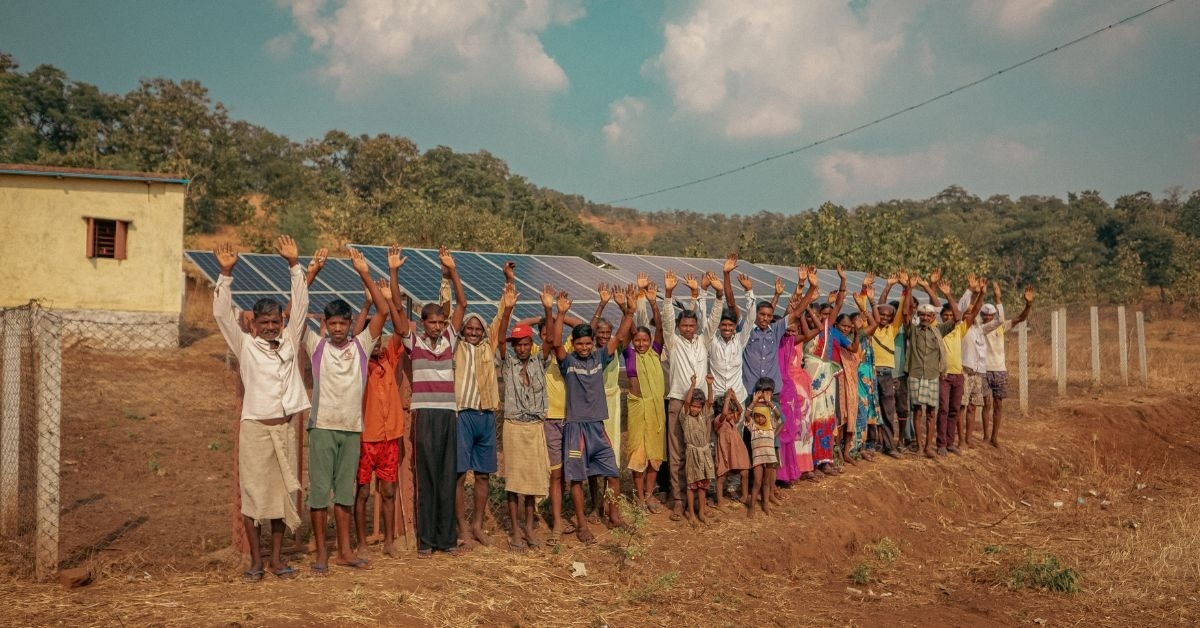Solar startups are powering handlooms, farms & forgotten villages
| Date :17-Apr-2025 |


By Krystelle DSouza :
From subsidies that encourage the adoption of green power to microgrids that reduce dependency on traditional power sources, these startups are ensuring nothing hinders solar adoption in India’s villages.
Thangjam Basanta Meitei (57) has always loved the winter. But along with the pleasant chill that it heralds, winter also means shorter days. And this Basanta dreads. He clarifies he isn’t afraid of the night; it is insects and rodents - which thrive in the dark - that he detests.
Basanta belongs to the village of Yairipok in Manipur. One could blame its remote location coupled with episodes of ethnic violence for the unsteady power supply, whose capricious dynamic would often plunge the village into darkness soon after sunset.
“As soon as it would get dark, insects and rats would enter my house. Imagine preparing dinner, in the dark with insects everywhere. How could we cook? How could we eat? How could we wash our plates in the dark?”
While kerosene lamps and candles improved visibility, they did nothing to fend off the creatures. So, the most feasible thing was to call it a day. Basanta would go to bed by 5 pm. “We had tough times,” he concludes; note the use of the past tense. Those days are now behind him. You see, for the last few years, Basanta’s home has been powered by solar energy, as are many homes in Manipur. The darkness does not dictate their schedule anymore, the Sun does.
Renewable energy is breathing new life into rural India
The Sustainable Development Goals (SDGs) recognised by the United Nations assert that inclusive development is impossible without ensuring equitable access to clean and affordable energy. So, let’s turn our gaze to India’s hinterland where 65 percent of the population resides.
Despite electricity being extended to over 800 million people since 2001, 2.4 percent of households remain unelectrified. But now this statistic is set to change as green startups mushroom across the country. Their entry into these rural markets is marked by an attempt to bring its people respite in the form of solar microgrids. As Distributed Renewable Energy (DRE) penetrates remote regions, experts see it as a step closer to the goal of energy democratisation.
But the purpose transcends sustainability, points out Shweta Jaju, co-founder and director, ONergy Solar. “It’s also about enabling livelihoods and improving quality of life.” This is backed by ONergy’s impact; the startup has empowered a million lives through its solar solutions, which extend to households, businesses, and farmers; affordability, accessibility and ease of adoption are the mainstays of their model.
“We focus on simplified financing options to make solar adoption easier, including government subsidies and flexible payment plans. This coupled with technology-driven solutions that ensure efficient solar panel installations and local partnerships with shop owners, electricians, and solar installers, helps create a strong last-mile delivery network,” Shweta elaborates.
But of course, breaking new ground isn’t easy. Subsidies - a shot in the arm for adoption of green power is a $53 billion market potential for clean energy in rural areas, reports suggest. But even as the infusion of green power into India’s villages is emphasised, startup owners find themselves navigating bottlenecks. Shreya Mishra, founder of SolarSquare, a startup that is decarbonising the country through its solar solutions, points to the lack of awareness as the biggest one to tackle.
“In India, just about 1 percent of homes have adopted solar. Historically, customer awareness has been the biggest bottleneck in the adoption of solar.” But, she sees the glass as half full. “India’s solar revolution is just beginning, customer awareness levels are on the rise.”
Another presumption that these entrepreneurs find themselves refuting is that harvesting the sun is a pricey ordeal. Shreya points out, “Solar helps families save money and pays back in 4-5 years.” However, she acknowledges that not everyone might be able to make a down payment on solar panels. This is where subsidy schemes play their part. Choosing the right financing models and government schemes is crucial to ensure that solar adoption doesn’t burn a hole in your pockets.
One of the world’s largest domestic rooftop solar initiatives, the PM Surya Ghar: Muft Bijli Yojana (PMSGMBY), under which 10 lakh homes have been solar powered as of March 10, 2025.
Through collateral-free loans up to Rs 2 lakh at a 6.75 percent subsidised interest rate through public sector banks, it is accelerating the adoption of green energy. This is the power of a loan. Thinking back to his scepticism about going solar, Basanta replays a conversation he had with SNL Technologies in Manipur. Founded by Seth Moirangthem, the startup is one of the most popular bets for solar power in the state. It isn’t just their top-notch services but also their EMI options. “I told Seth that I did not have much money for solar panels (solar panels in the region cost around Rs 40,000). So, he put me in touch with a partner NGO that gave me a loan and allowed me to pay it back over three years, by paying Rs 920 every month,” Basanta shares.
Seth is just happy he could help. His studies were often interrupted by frequent power cuts. “I know the problems that people in Manipur face. In the monsoons, if an electric line gets damaged, the people in that area have to go without electricity for six months,” he explains.
So, he was keen that his business model be hinged on social impact.
While the solar panels are ensuring students uninterrupted hours of productivity, the power loom project is a boon for the women in this region. Elaborating on it, Seth shares, “In our state, every woman works. Those who don’t have corporate jobs, weave. They usually do this at night after they have completed the household chores.” The efficient electric motors that powered the looms turned futile in the face of a power cut. Solar power is a great antidote. The women aren’t worried about the power supply hampering their work.
Loitongbam Sofia Devi, who has been weaving for years now, and is one of the beneficiaries of the solar power loom, is thrilled. “Before solar, I had to stop my work around early evening because we have power cuts here. But now, I can keep going. I am also able to earn more because I weave more.
Ever since solar came to us, we have had good days,” she says.
Is Seth planning to expand the state’s potential to harvest the Sun? He smiles, adding that he has his eye on solar microgrids (self-contained electrical networks which operate alongside the main grid). But their logistical requirements make them unconducive for a place like Manipur, which is filled with informal settlements and unorganised clusters. Here, independent solar panels are a more viable option.
Freeing villages from the grip of the grid
Darewadi, a small hamlet in Maharashtra, was once (in)famous for its energy crisis. The place was technologically exiled from the rest of India. But today, the village is characterised by its avant-garde energy; TVs, music systems and water pumps run at full throttle. The uninterrupted supply of electricity provided by the solar microgrids installed by Gram Oorja, a green energy initiative, makes this possible. n
